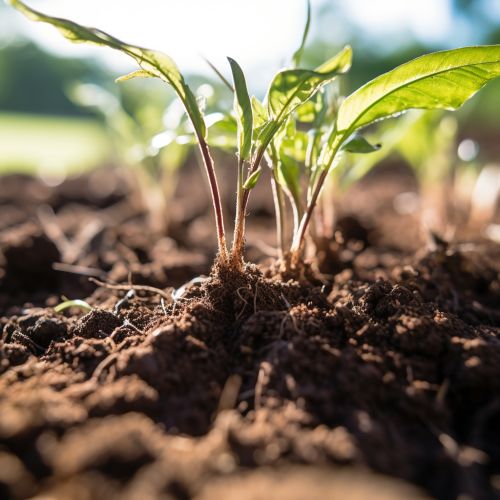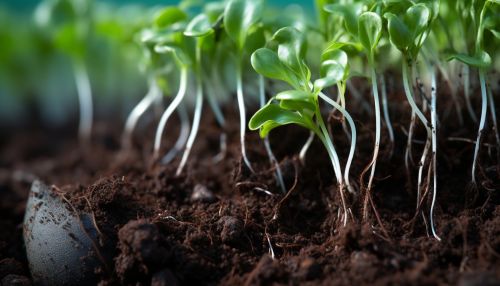Mechanisms of Plant-Microbe Interactions in Phytoremediation
Introduction
Phytoremediation is a biotechnological process that uses various types of plants to degrade, extract, contain, or immobilize contaminants from soil and water. This process is seen as an environmentally friendly and cost-effective method to remediate polluted sites, especially those contaminated with heavy metals. The effectiveness of phytoremediation is highly dependent on the plant-microbe interactions in the rhizosphere, which is the region of soil in the vicinity of plant roots that is directly influenced by root secretions and associated soil microorganisms more on rhizosphere.


Mechanisms of Plant-Microbe Interactions in Phytoremediation
Plant-microbe interactions play a crucial role in the phytoremediation process. These interactions can enhance the ability of plants to tolerate and accumulate contaminants, thereby improving the efficiency of phytoremediation. The mechanisms of these interactions can be broadly classified into two categories: direct and indirect interactions.
Direct Interactions
Direct interactions involve the physical contact between plant roots and soil microorganisms. These interactions can lead to the formation of symbiotic relationships, such as those between leguminous plants and nitrogen-fixing bacteria more on nitrogen fixation, or between plants and mycorrhizal fungi more on mycorrhiza. In these symbiotic relationships, the microorganisms help the plant to acquire essential nutrients from the soil, while the plant provides the microorganisms with carbohydrates and other organic compounds.
In the context of phytoremediation, certain bacteria and fungi can enhance the ability of plants to accumulate heavy metals. These microorganisms can produce metal-binding proteins or other compounds that can bind to heavy metals and reduce their toxicity. This mechanism is known as biosorption more on biosorption.
Indirect Interactions
Indirect interactions involve the effects of plant root exudates on the soil microbial community. Root exudates are a diverse range of compounds, including sugars, amino acids, and organic acids, that are released by plant roots into the soil. These exudates can stimulate the growth and activity of beneficial soil microorganisms, which in turn can enhance the availability of essential nutrients and the degradation of contaminants.
In the context of phytoremediation, certain root exudates can stimulate the activity of metal-reducing bacteria, leading to the reduction of heavy metals to less toxic forms. This mechanism is known as bioreduction more on bioreduction.
Factors Influencing Plant-Microbe Interactions in Phytoremediation
The effectiveness of plant-microbe interactions in phytoremediation can be influenced by various factors, including the type of plant, the type of microorganism, the type of contaminant, and the environmental conditions.
Type of Plant
The type of plant can influence the composition and activity of the soil microbial community. Different plants have different root exudation patterns, which can select for different microbial communities. In addition, certain plants have the ability to form symbiotic relationships with specific microorganisms, which can enhance their ability to accumulate or degrade contaminants.
Type of Microorganism
The type of microorganism can also influence the effectiveness of phytoremediation. Certain bacteria and fungi have the ability to degrade or immobilize contaminants, while others can enhance the availability of essential nutrients. The selection of appropriate microorganisms for bioaugmentation more on bioaugmentation is therefore a critical factor in phytoremediation.
Type of Contaminant
The type of contaminant can influence the mechanisms of plant-microbe interactions in phytoremediation. Certain contaminants, such as heavy metals, can be accumulated or immobilized by plants and microorganisms, while others, such as organic pollutants, can be degraded by microorganisms.
Environmental Conditions
Environmental conditions, such as soil pH, temperature, and moisture, can influence the activity of soil microorganisms and the availability of contaminants. Optimal environmental conditions are therefore necessary for the effectiveness of phytoremediation.
Future Perspectives
The understanding of plant-microbe interactions in phytoremediation is still in its early stages, and much research is needed to fully exploit these interactions for the remediation of polluted sites. Future research should focus on the identification and characterization of beneficial plant-microbe interactions, the development of effective bioaugmentation strategies, and the optimization of environmental conditions for phytoremediation.
